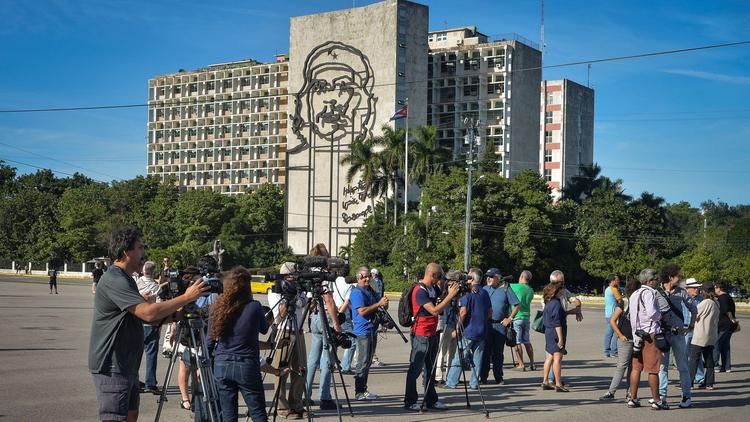Artist Tania Bruguera was repeatedly detained by authorities in Havana last week. The Cuban national was planning a work, promoted as #YoTambienExijo (I Also Demand), in Revolution Square in which anyone could speak into an open mic for one minute. (One participant in the project’s first incarnation, Tatlin’s Whisper #6 in 2006, proclaimed, “Cuba is a country surrounded by the sea, and it is also an island surrounded by censorship.”) The weekend before the new performance was to take place, Cuba’s National Mixed Media Arts Council pulled its support for the artist, explaining that the “the action would negatively impact public opinion, in a key time of negotiation between the Cuban government and the government of the United States.” Bruguera was then detained hours before the performance. She has since been released, although she’ll reportedly will be barred from leaving Cuba for two to three months. She’s been charged with “resistance and disrupting the public order.”
- “Deeper consideration of Bruguera’s situation involves considering whether an artwork can effect political changes in the realm of civil rights and how an artwork might catalyze collective political action.” In response to Bruguera’s detention, artist Coco Fusco writes about the machinery of art, politics, and the Cuban public, proposing that artists’s exercise of political will may now be a timely and valid response to a state that enforces unethical control over public space and discourse.
- Ben Davis offers a compelling year-end list: the 30 must-read art essays of 2014. It’s a dazzling array of topics, from the art world’s issues with race and money to NSA spying, “Zombie Formalism” and protest to “Post-Internet” art.
- “Scrapers are turning the great image vortex of our digital ocean into an actual sea of plastic garbage on demand”: Greg Allen on Amazon sellers who scrape online images, sometimes by celebrated photographers, and apply them to phone and iPad cases.
- From Caravaggio’s unshod pilgrims to Velázquez’s humble water seller, art has often portrayed poverty. Where—in an era in which “wealth has never been more raw and obvious in the art world”—do we find those images today? Perhaps outside the gallery world, writes Jonathan Jones. And “perhaps [they] will be remembered when Hirst is forgotten, just as we have forgotten all the stuffy portraits of Victorian capitalists but crowd and queue to see The Potato Eaters.”
- Among her three wishes for 2015, Carolina Miranda includes a major biennial—Hammer in 2016? Whitney in 2017?—dedicated not to “squishy non-themes about questions of process and time and hybridity” but to race. “It’s time for the art world to catch up.”
- “The democratization of taste, abetted by the Web, coincides with the democratization of creativity. The makers have the means to sell, but everybody has the means to make. And everybody’s using them. Everybody seems to fancy himself a writer, a musician, a visual artist”: William Deresiewicz writes about the evolution of the “artist”—from hard-working artisan, solitary genius to, now, the creative entrepreneur—and ponders the consequences of the new meanings of “art” and “being an artist.”
Follow Art News From Elsewhere on the Walker Art Center homepage or via @walkermag, the Walker’s editorial-focused Twitter feed.




